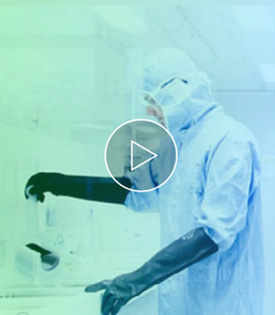CytoSoft® Imaging products provide a tool to culture cells on PDMS substrates with various rigidity including 0.2, 0.5, 2, 8, 16, 32, and 64 kPa. This CytoSoft® Imaging plate comes with 1 glass-bottom 96-well plate for high resolution imaging of cells on the selected stiffness.
- Specific substrate stiffness
- Long shelf life
- Each batch stiffness is carefully measured and certified
This CytoSoft® Imaging 96-well product has a defined elastic modulus (see certificate of analysis) with a glass bottom. The thickness of the silicone gel is uniform with a ~0.03 mm thick layer of silicone in each well. The silicone gels are activated and ready to bind to a purified ECM, such as PureCol® type I collagen prior to cell addition. The rigidity of the substrate to which cells adhere can have a profound effect on cell morphology and gene expression. CytoSoft® products provide a tool to culture cells on substrates with various rigidities covering a broad physiological range using a thin layer of biocompatible silicone.
The CytoSoft® Imaging plate has a glass bottom for high-resolution imaging where low autofluorescence and exceptional optical clarity are required. The 96-well format is optimal for high-throughput cell studies and screening. The plate consists of a #1.5 thickness glass bottom bonded to a black polystyrene frame and includes a lid. The plates are sterilized using ozone and provided with 1 plate per package.
On the bottom of each well, there is a thin layer of specially formulated biocompatible silicone, whose elastic modulus (rigidity) is carefully measured and certified. The surfaces of the gels in CytoSoft® products are functionalized to form covalent bonds with amines on proteins. The chemical functionalization is stable and the reaction does not require a catalyst, facilitating coating of the gel surfaces with matrix proteins and plating cells.
The silicone substrates are optically clear and have a near zero auto-florescence. The layer of silicone in each well is firmly bonded to the bottom of the well. Unlike hydrogels (such as polyacrylamide gels), silicone gels are not susceptible to hydrolysis, do not dry or swell, are resilient and resistant to tearing or cracking, and their elastic moduli (rigidities) remain nearly unchanged during extended storage times.
CytoSoft®-Imaging products accommodate live cell staining using membrane and cell permeable dyes; fixation of cells using common techniques such as paraformaldexyde; and immunostaining of fixed cells.
Precaución: This product is for R&D use only and is not intended for human or other uses. Please consult the Material Safety Data Sheet for information regarding hazards and safe handling practices.
